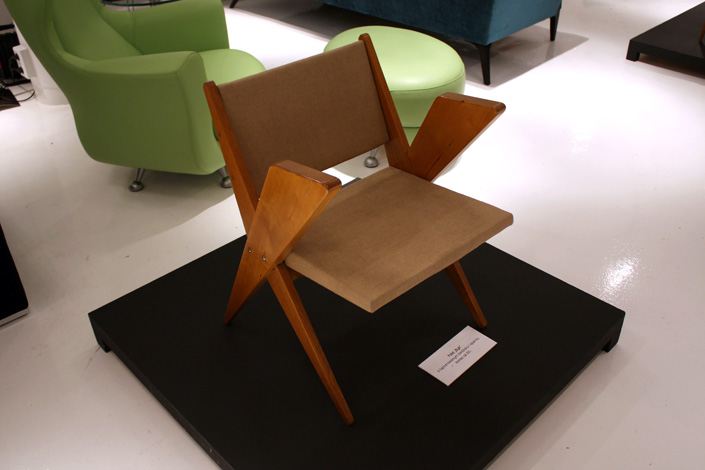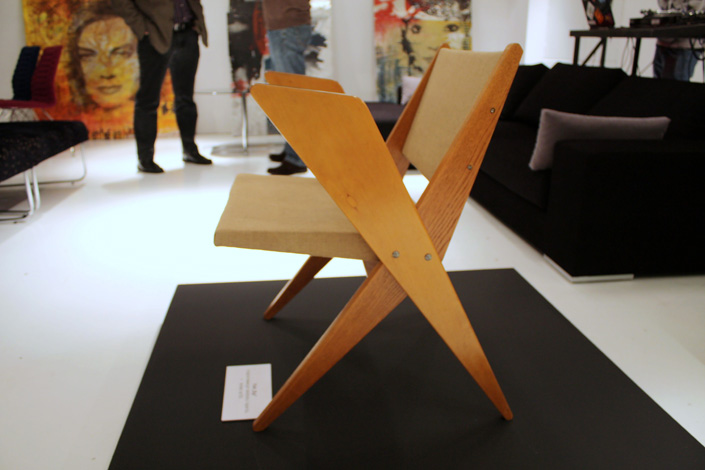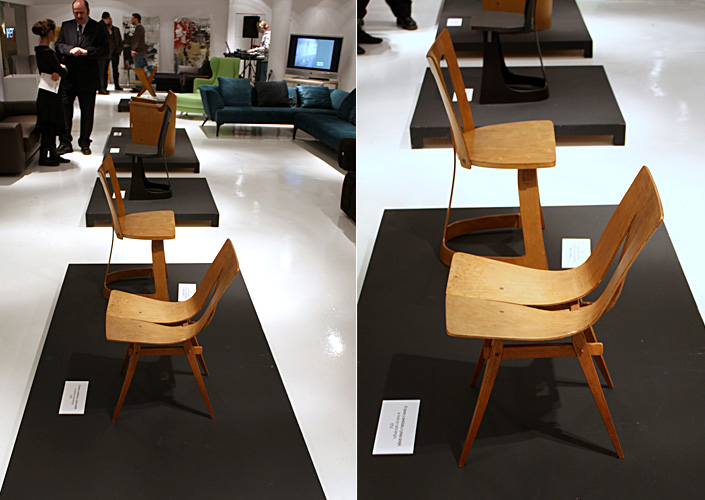
On the margin
Design in museums
The following article will give you an extensive presentation of selected projects by famous designers which can be found in the museums of New York City. Thus, we would like to highlight a relatively new phenomenon, namely the increasingly frequent presence of objects by famous designers. Without a doubt, since the Arts & Crafts movement, design has been treated as a separate discipline of art. But only in the past few years have these objects, which are designed contemporaneously and are available for purchase in shops, appeared in the art galleries.
In this presentation we'll take a look at this kind of products. They are a part of our everyday life, easily accessible to consumers ( providing one can afford to purchase it), yet these objects are distinguished by placing them in the museum context. We can learn the importance of the object from the description of the item – one of the most important pieces of information you may find is that for example the Museum of Modern Art included that work in their permanent collection.Branded products are considered to be an object of desire for the modern man. We are tempted to aesthetize our existence and we love to be surrounded by objects more sophisticated than some works of art. Today, a car seat or a kettle rather than a painting can be treated as a synonym for beauty. Perhaps that is why design exhibitions are so popular. Just note how many festivals appeared in Poland in recent years. Probably one of the reasons is that the objects made by contemporary designers are like works of art, often more aesthetically pleasing than practical. Hence, design is one of the fastest growing cultural industries.
Have a look at few examples of product prices mentioned here:
MYTO chair in MoMA — around. 400 $ (special offer)
Shogun Tavolo lamp — 389 €
Antibodi Chaise — ok. 5000–8000 $
Nebula — ok. 7700 £
Miss C.O.C.O. — 355 $


No Discipline Ron Arada’s exhibition, MoMA, 2009

Louise Campbell, Prince Chair, 2002, for HAY, Denmark (2006); Bertjan Pot, Marcel Wanders, Carbon Chair, 2004, for Moooi

Greg Lynn, Ravioli Armchair, 2005, for Vitra, Inc.

Konstantin Grcic, MYTO chair, 2007; Marcel Wanders, Knotted chair, 1996, for Cappellini S.p.A.

Patricia Urquiola, Antibodi Chaise, 2006, for Moroso S.p.A.

Philippe Starck, Miss C.O.C.O. chair, ,1998, for Cassina, USA

Campana Brothers, Corallo Chair, 2006, Edra

Patric Jouin, ONE_SHOT, 2006, for Materialise; Mario Botta, Shogun Tavolo lamp, 1986, for Artemide S.p.A.

Hella Jongerius, Beads and Pieces collection, 2006 for Artecnica, Inc.

Zaha Hadid, Cutlery, 2007, by WMF

Robert Venturi, Queen Anne side chair, 1984, for Knoll International, 1989; Ettore Sottsass, Ivory Coffee Table 1985, for Memphis

Ingo Maurer, Porca Miseria Hanging Lamp, 1994, Ingo Maurer GmbH; Ingo Maurer, Porca Miseria Hanging Lamp, 1994, Ingo Maurer GmbH;
Jan Kurzątkowski furniture exhibition in Iker, Łódź
This is a presentation of selected works designed by Jan Kurzątkowki, one of the greatest artists of Polish design in the 20th century. The exhibition of his furniture served us as a pretext.
Using the opportunity, we would like to emphasize a new topic related to the functioning of the branded furniture market. While presenting the American products, that can be bought in shops and simultaneously viewed in the museums, Iker presentation is an example of a different but equally interesting strategy.
The very unique or even museum type objects were put into a marketing space. The exhibition, which until now could only take place in the gallery or museum, appeared in a furniture showroom.
Słuchaj
Zapis fonetyczny
It turns out that the global free market economy, as well as the relationship between art and market is more common or even obvious. Iker's partnership with the National Museum in Warsaw is the best proof.




This is a presentation of selected works designed by Jan Kurzątkowki, one of the greatest artists of Polish design in the 20th century. The exhibition of his furniture served us as a pretext.
Using the opportunity, we would like to emphasize a new topic related to the functioning of the branded furniture market. While presenting the American products, that can be bought in shops and simultaneously viewed in the museums, Iker presentation is an example of a different but equally interesting strategy.
The very unique or even museum type objects were put into a marketing space. The exhibition, which until now could only take place in the gallery or museum, appeared in a furniture showroom.
Słuchaj
Zapis fonetyczny
It turns out that the global free market economy, as well as the relationship between art and market is more common or even obvious. Iker's partnership with the National Museum in Warsaw is the best proof.
Check the archive

no 55 January 2010
theme of the issue:
ŁÓDŹ - NEW YORK
< spis treści
Article
From Editors - Artur Zaguła
Presentation
Different faces of New York
Career in Culture
New York is fascinating - interview with Maria Kornatowska, Maja Ruszkowska-Mazerant
Culture industries
Cultural industries change our neighborhoods - Artur Zaguła, Maja Ruszkowska-Mazerant
Young culture
Races do not interest me - interview with Leszek Bartkiewicz, Maja Ruszkowska-Mazerant
On the margin
Design in museums - Artur Zaguła





